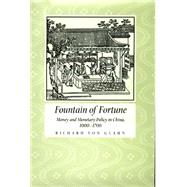
Note: Supplemental materials are not guaranteed with Rental or Used book purchases.
Purchase Benefits
What is included with this book?
| List of Illustrations | |
| Acknowledgments | |
| Introduction | p. 1 |
| The Fundamentals of Classical Chinese Monetary Analysis | p. 15 |
| Transition to the Silver Economy, 1000-1435 | p. 48 |
| Coinage in the Dawning Age of Silver, 1435-1570 | p. 83 |
| Foreign Silver and China's "Silver Century," 1550-1650 | p. 113 |
| Coin vs. Silver: Expansionary Policies of the Wanli Reign, 1570-1620 | p. 142 |
| The Great Debasements: The Tianqi and Chongzhen Reigns, 1620-1645 | p. 173 |
| The "Monetary Crisis" of the Seventeenth Century | p. 207 |
| List of Abbreviations | p. 259 |
| Notes | p. 261 |
| Glossary | p. 303 |
| Bibliography | p. 311 |
| Index | p. 329 |
| Table of Contents provided by Blackwell. All Rights Reserved. |
The New copy of this book will include any supplemental materials advertised. Please check the title of the book to determine if it should include any access cards, study guides, lab manuals, CDs, etc.
The Used, Rental and eBook copies of this book are not guaranteed to include any supplemental materials. Typically, only the book itself is included. This is true even if the title states it includes any access cards, study guides, lab manuals, CDs, etc.